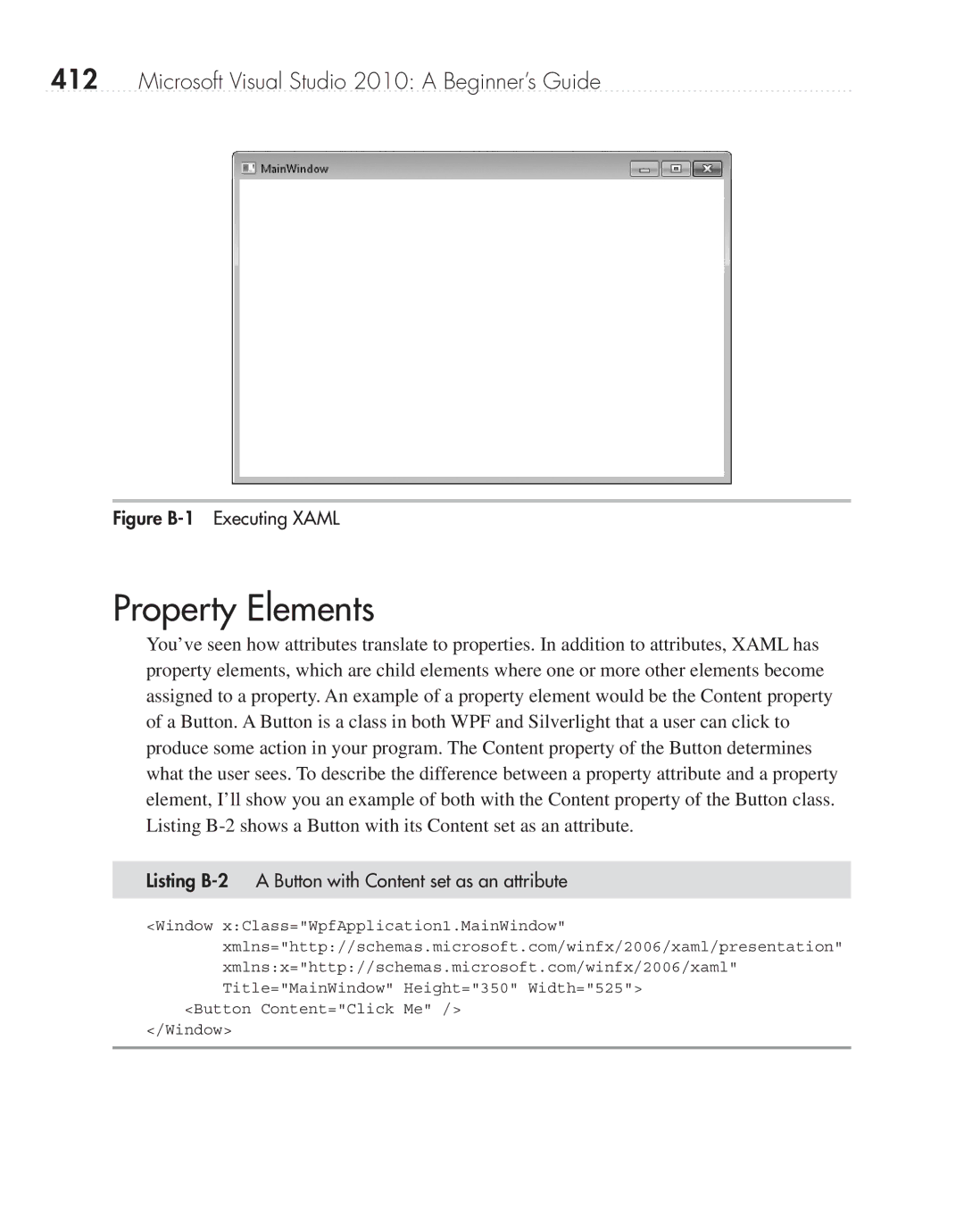
412Microsoft Visual Studio 2010: A Beginner’s Guide
Figure B-1 Executing XAML
Property Elements
You’ve seen how attributes translate to properties. In addition to attributes, XAML has property elements, which are child elements where one or more other elements become assigned to a property. An example of a property element would be the Content property of a Button. A Button is a class in both WPF and Silverlight that a user can click to produce some action in your program. The Content property of the Button determines what the user sees. To describe the difference between a property attribute and a property element, I’ll show you an example of both with the Content property of the Button class. Listing
Listing B-2 A Button with Content set as an attribute
<Window x:Class="WpfApplication1.MainWindow" xmlns="http://schemas.microsoft.com/winfx/2006/xaml/presentation" xmlns:x="http://schemas.microsoft.com/winfx/2006/xaml" Title="MainWindow" Height="350" Width="525">
<Button Content="Click Me" /> </Window>
